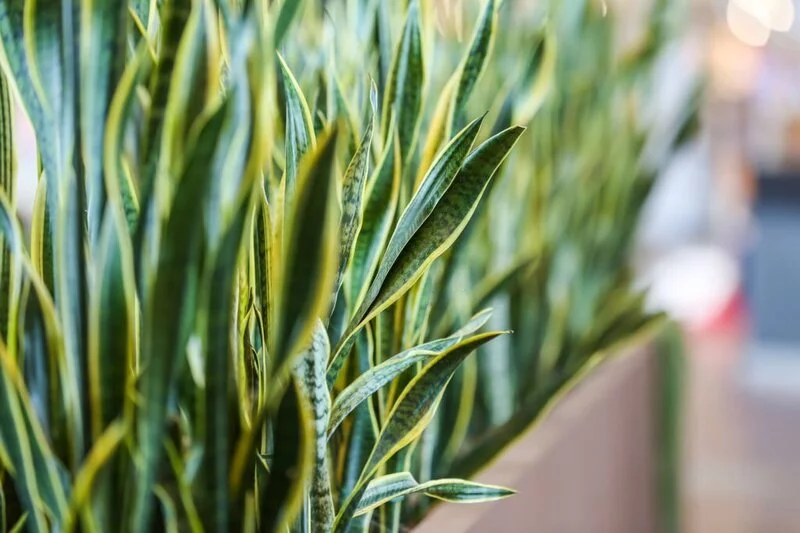If you’re a fan of houseplants, chances are you’ve got a snake plant or two gracing your space with its striking, upright leaves. It’s one of the most loved plants for its hardy nature and aesthetic appeal. But what if one day, you find your snake plant leaning or, even worse, falling over? Don’t panic! This isn’t a sign of the plant apocalypse. There can be a few reasons why your snake plant is going off balance, and we’re here to help you figure it out. So, let’s dive in and get your snake plant standing tall again!
- SPECIFICALLY FORMULATED FOR SNAKE PLANTS – A premium blend of all natural peat moss, perlite, lime, and earthworm castings formulated to provide the most optimal growth environment for Snake Plants of all variety. This blend promotes a faster quality plant growth for your snake plants.
- GROW HEALTHY AND VIBRANT SNAKE PLANTS – Our soil blend provides exceptional drainage properties that prevents water logged soil and root problems. Store bought soils may leave your snake plant with droopy and mushy leaves. Our aerated and fast draining blend will allow your snake plant to thrive and grow lush and vibrant.
- READY TO USE PRE-MIXED BLEND: Simplify your gardening hobby with our pre-mixed soil blends for a hassle free potting and replanting experience. Simply transplant your snake plants into their container and add our soil mix.
- RESEALABLE BAG: Packaged in a 8×10 Inch 2 Quart Sized resealable bag. The perfect amount of soil for planting or repotting 1-2 small to medium sized plants.
Overwatering and Root Rot
First up on the suspect list – overwatering. Yes, believe it or not, while snake plants are hardy, they don’t like to have wet feet. Overwatering is one of the most common plant care mistakes, and it can cause some serious issues, including a condition called root rot.
Root rot is what happens when the plant’s roots sit in water for too long. The excess water makes it harder for the roots to breathe, leading to decay. And a plant with rotten roots loses its strength and starts to lean or even fall over.
How do you know if your snake plant has fallen victim to overwatering and root rot? Look out for yellowing leaves, a musty smell from the soil, and of course, your plant leaning or falling over.
If you suspect root rot, don’t lose hope! Start by cutting back on watering. Allow the top 2-3 inches of soil to dry out between waterings. If the condition seems severe, you might need to remove the plant from its pot, trim off the rotten roots, and repot it in fresh, well-draining soil. Remember, your snake plant would rather be a little thirsty than drowning!
Inadequate Light
Imagine trying to read in a dimly lit room. You’d probably lean closer to the page, right? Well, plants kind of do the same thing. If your snake plant isn’t getting enough light, it might start stretching or leaning towards the light source. This phenomenon is known as etiolation, and it can leave your plant looking tall and skinny, making it unstable and prone to falling over.
Snake plants love bright, indirect light. They can tolerate low light conditions, but they won’t thrive. If you notice your snake plant leaning or the leaves becoming long and narrow, it might be craving more light. Try moving it to a brighter spot, but be careful to avoid direct sunlight, which can scorch its leaves.
Overcrowded Pot
Just like us, plants need room to breathe and grow. If your snake plant’s pot is packed with leaves, it could be feeling a little cramped, which might cause it to lean or fall over. This is especially true for snake plants, as they multiply by producing new shoots or “pups” from their underground rhizomes, causing a single pot to become crowded over time.
If the pot is overflowing with leaves or if you see roots poking out of the drainage holes, it might be time to give your snake plant a new home. Choose a pot that’s a few inches larger than the current one and make sure it has good drainage. Gently separate some of the pups from the mother plant and repot them. This will give all parts of the plant more room to grow, and reduce the risk of your snake plant toppling over.
Weak or Damaged Roots
Roots are a plant’s anchor, keeping it stable and secure. However, if your snake plant’s roots are weak or damaged, it might have trouble standing upright. This can be caused by physical damage during repotting or pest infestations like root mealybugs or fungus gnats.
If your snake plant is falling over and you’ve ruled out overwatering, light issues, and overcrowding, it’s time to check the roots. Carefully remove the plant from its pot and take a look. Healthy snake plant roots should be firm and white or light tan. If you notice soft, dark, or shriveled roots, you might be dealing with root damage.
To help your plant recover, trim off the unhealthy roots and treat any pests you find. Repot the plant in fresh soil, and give it some TLC while it recovers.
Preventative Measures
Prevention is better than cure, right? Here are some quick tips to help keep your snake plant upright and happy:
- Water Wisely: Let the soil dry out between watering. Your snake plant will thank you for it!
- Light It Up: Make sure your plant gets plenty of bright, indirect light.
- Give It Space: Don’t let your pot get overcrowded. If it’s getting too full, it might be time to repot.
Remember, a happy, healthy snake plant is less likely to lean or fall over.
Conclusion
So, why is your snake plant falling over? It could be due to overwatering, not enough light, an overcrowded pot, or root damage. But don’t worry, now that you know the possible causes, you can take steps to fix the issue and prevent it from happening in the future. Remember, the key to happy houseplants is understanding their needs and meeting them as best as you can. With a little care and attention, your snake plant will be standing tall and proud in no time!




